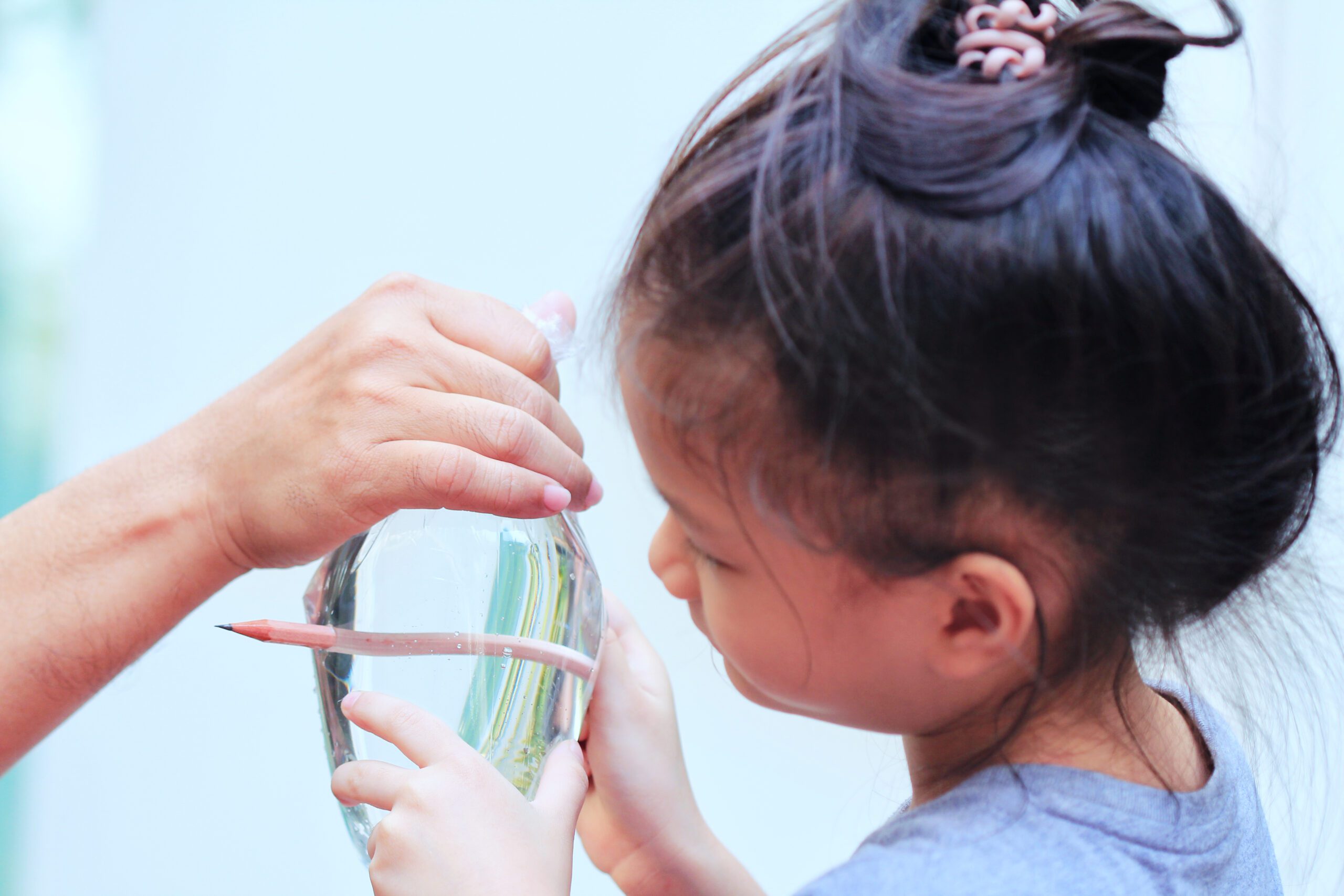
14 Jun Summer Science Activities for Kids & Toddlers
Summer is officially here. While families throughout the Greater Houston area are looking forward to sunshine, beach days, weekend trips, and the reopening of many activities and public events, summertime also means children have more idle time on their hands.
If you’re looking to keep your child focused and engaged this summer, there’s no shortage of summer science activities for kids and toddlers. Science is integral to our approach here at Sugar Mill Montessori. We’ve hashed out the importance of science in Montessori education, as well as the best summer science experiment to help children avoid summer learning loss and stay ahead of the curve.
We encourage interested families to reach out to us to learn more about Montessori education or to schedule a tour. In the meantime, let’s experiment with summer science!
Why Science Matters in Montessori Education
In Montessori education, we believe that children grow up to be compassionate, independent, critical thinkers by exploring and engaging with the world around them.
With that said, cultivating the scientific mind at a young age ‒ throughout the year ‒ is essential to every child’s development. But during the three months of summer, it’s easy for toddlers and young children to lose some of the learning they’ve processed in the previous school year.
Spending time in nature and engaging your child in open-ended questions are great ways to keep their mind engaged. But practicing science also plays a crucial role in nurturing a child’s inquisitive mind and helping them understand the How’s and Why’s of the world.
Here are some of the best summer science activities for kids and toddlers!
Gumdrop Molecules
Are you looking for a fun and tasty way to teach your child about molecules and atoms?
Using different colored gumdrops as atoms and toothpicks as molecular chains, you and your child can practice building different molecules. It will also help to create flashcards with the atoms, molecules, and molecular formulas written and drawn out.
Here are three basic atoms represented by three different colored gumdrops:
- Yellow = Oxygen
- Green = Hydrogen
- Red = Carbon
Attach one yellow gumdrop to two green gumdrops. This creates a water molecule (H2O). Next, create a carbon dioxide molecule by attaching two yellow gumdrops to a red gumdrop (CO2).
Use an array of different colored gumdrops if you want to practice creating a wider variety of molecules with your child.
Leak-Proof Bag
As you teach your child more about atoms and molecules, it helps to use real-life examples to expand their understanding. One way you can do this is through the leak-proof bag experiment, which is a fun activity you can take outside on a hot day. Here’s how it works:
Fill a Ziploc bag halfway with water. Seal the bag closed. Ask your child what would happen if they were to poke holes in the bag with sharp pencils.
Next, hold up the Ziploc bag as your child pokes a hole through both sides of the bag with a freshly sharpened pencil. To their surprise, the pencil goes right through without causing a leak!
Explain to your child how flexible plastic is a polymer chain, a long flexible chain of molecules. (It may be beneficial to also create a long polymer chain with the previous gumdrop molecule experiment alongside this experiment.) As the pencil goes through the plastic, the molecules spread apart and then seal back around the pencil, hence why there is no leak.
Afterward, you both can cool off by removing the pencils and watching the water shower out of the Ziploc bag.
Sticky Ice
What’s a quick summer science activity you can do with materials already lying around your house?
Combine water in a cup with 5-7 ice cubes. You’ll also need a piece of string, which can come from twine or yarn. You could also use a shoelace.
Have your child attempt to pick up one of the ice cubes with the string. They won’t be able to. After attempting to, sprinkle some salt over the string. Wait for one minute, pick up the string and attempt to pick up one of the ice cubes again.
Salt lowers the temperature of the ice. As the water in the ice refreezes, the string gets caught, making it possible to lift the ice cubes.
Ocean Currents
There are plenty of beautiful beaches and ocean side parks to visit around Houston. But there are also ocean-themed summer science activities for kids and toddlers you can do right at home! This experiment, in particular, can help your child understand how different water temperatures cause ocean currents:
- Fill a clear baking dish about ⅓ full of cold water.
- Add 3-4 drops of blue food coloring.
- Add 1 ½ cups of ice to the water.
- Stir, and then let the water sit and get cooler.
As the water is cooling down and the ice melts, boil four cups of water. Once it has boiled, add 4-6 drops of red food coloring. Pour about a cup of the red boiling water into the dish, concentrating it in one corner. As the boiling water mixes and pushes through the cold, you’ll be able to see purplish currents form.
Enjoy These Summer Science Activities with Your Child
Summertime doesn’t mean your child has to fall behind in their learning and development. By integrating these summer science activities, you can keep your child engaged, entertained and nurture their inquisitive mind in the process.
Are you looking to enroll your child in a Montessori program in the Greater Houston area? Sugar Mill Montessori in Sugar Land, TX, is accepting students for the 2021-2022 school year. Contact us today to learn more about our Montessori programs or if you would like to book a tour of our school.



Sorry, the comment form is closed at this time.